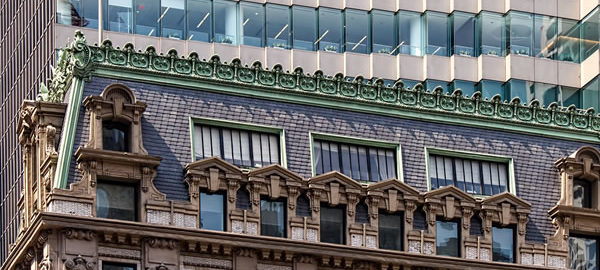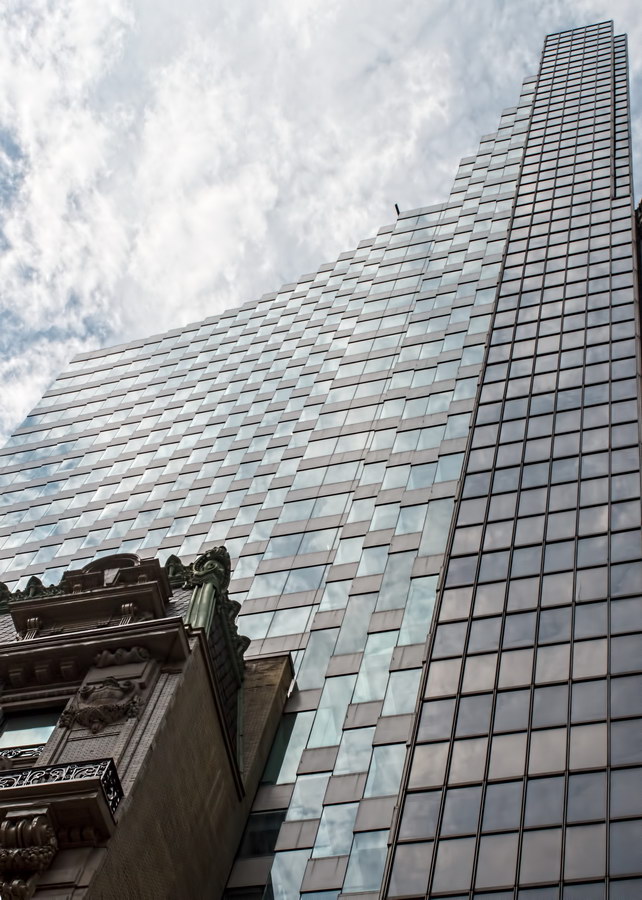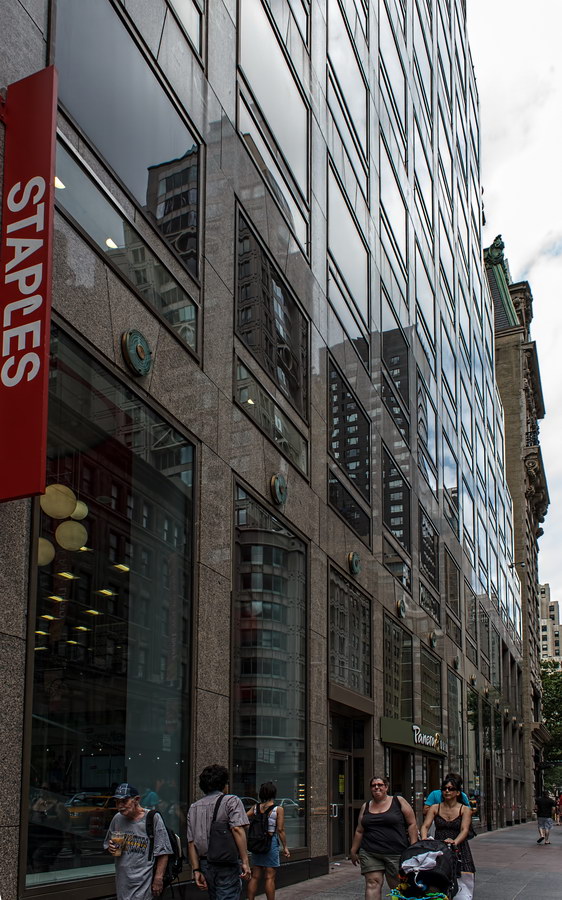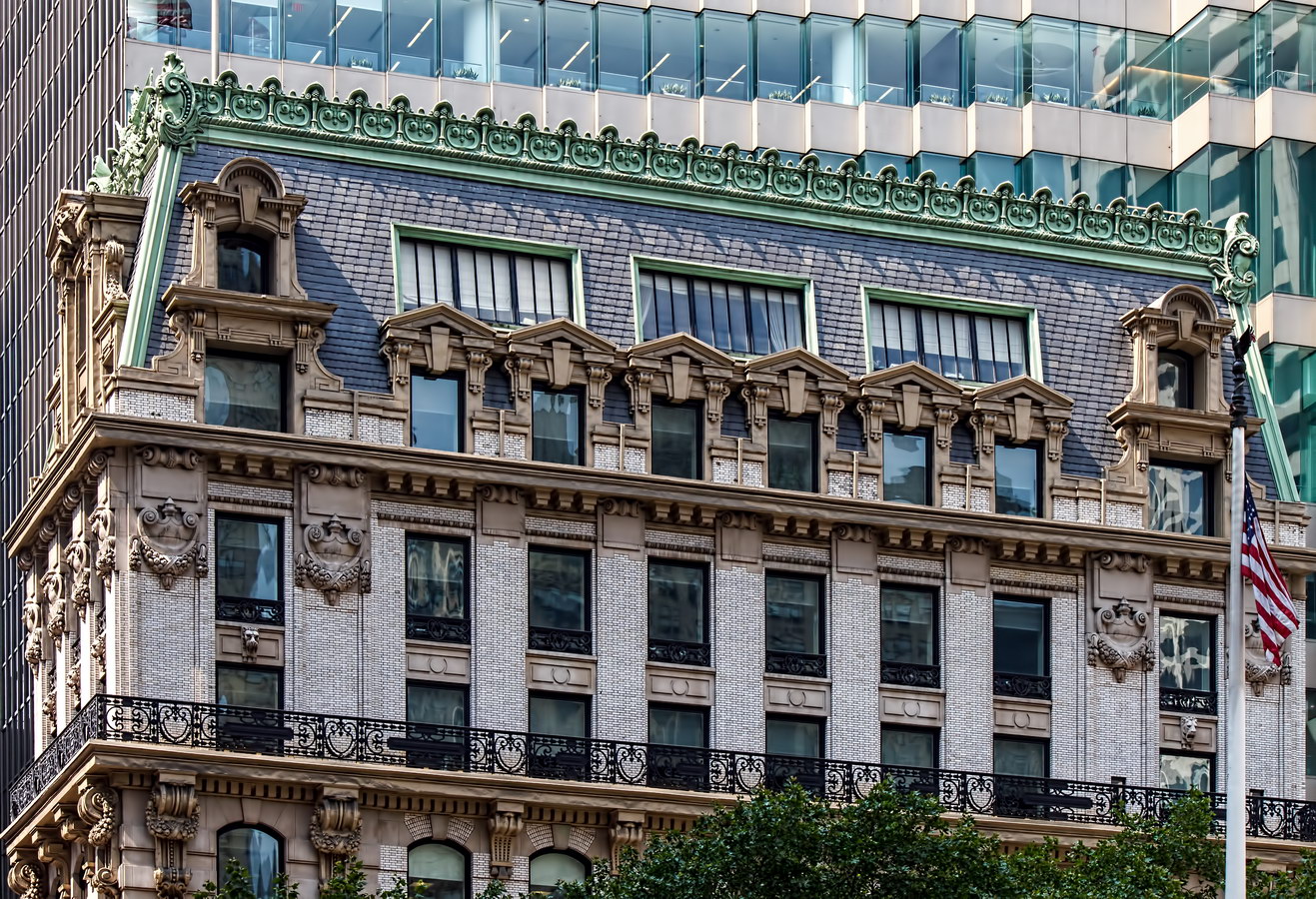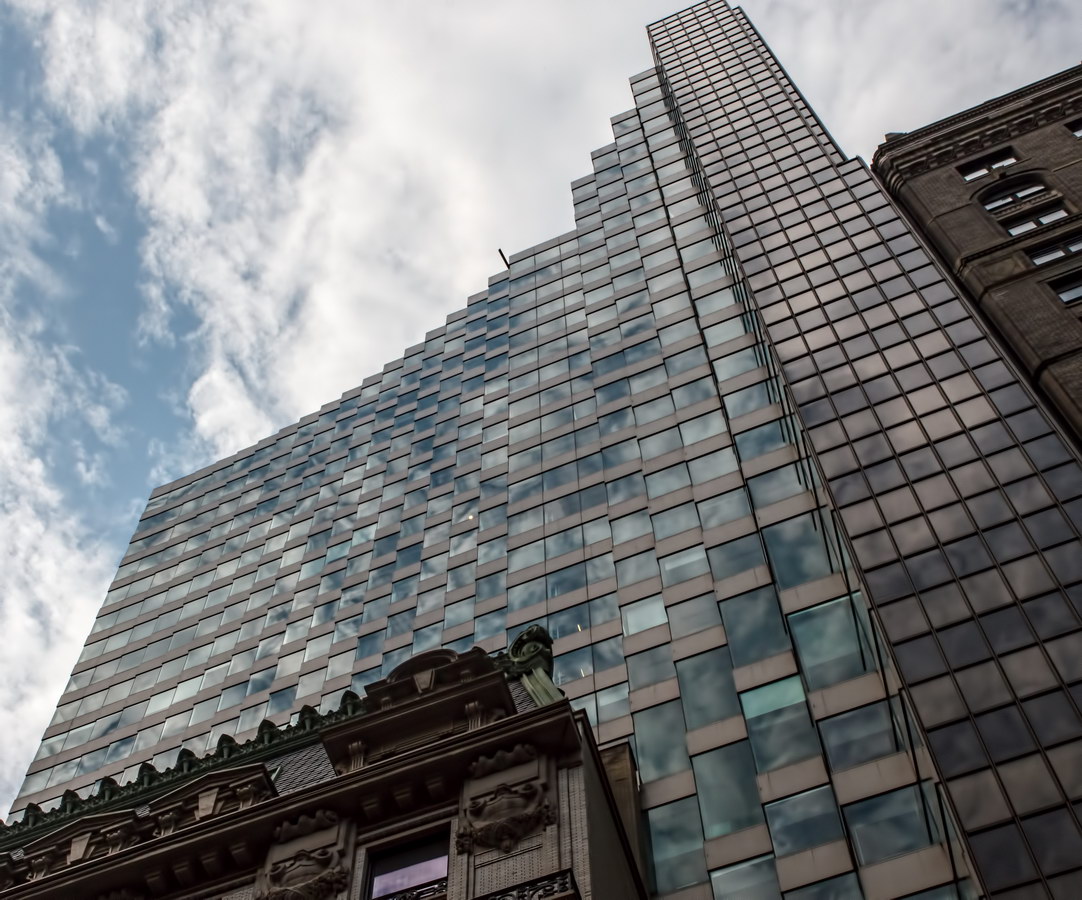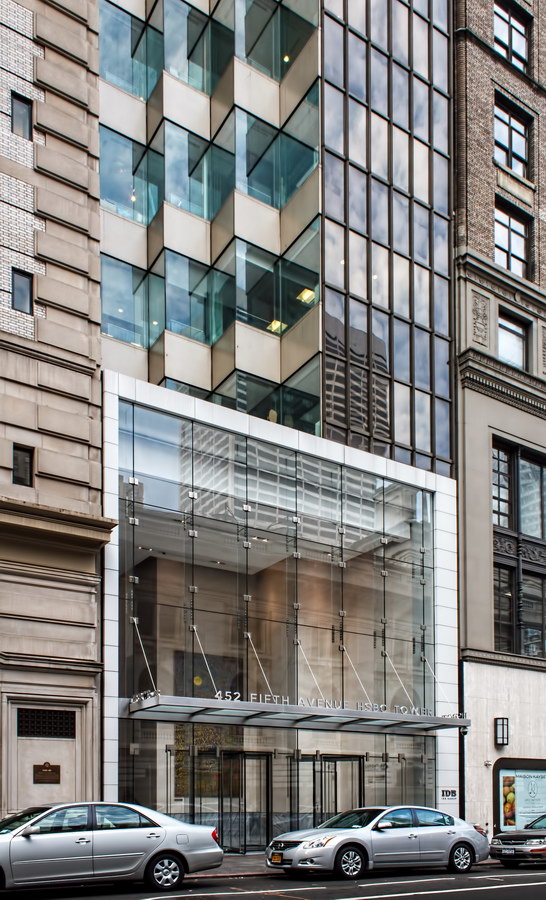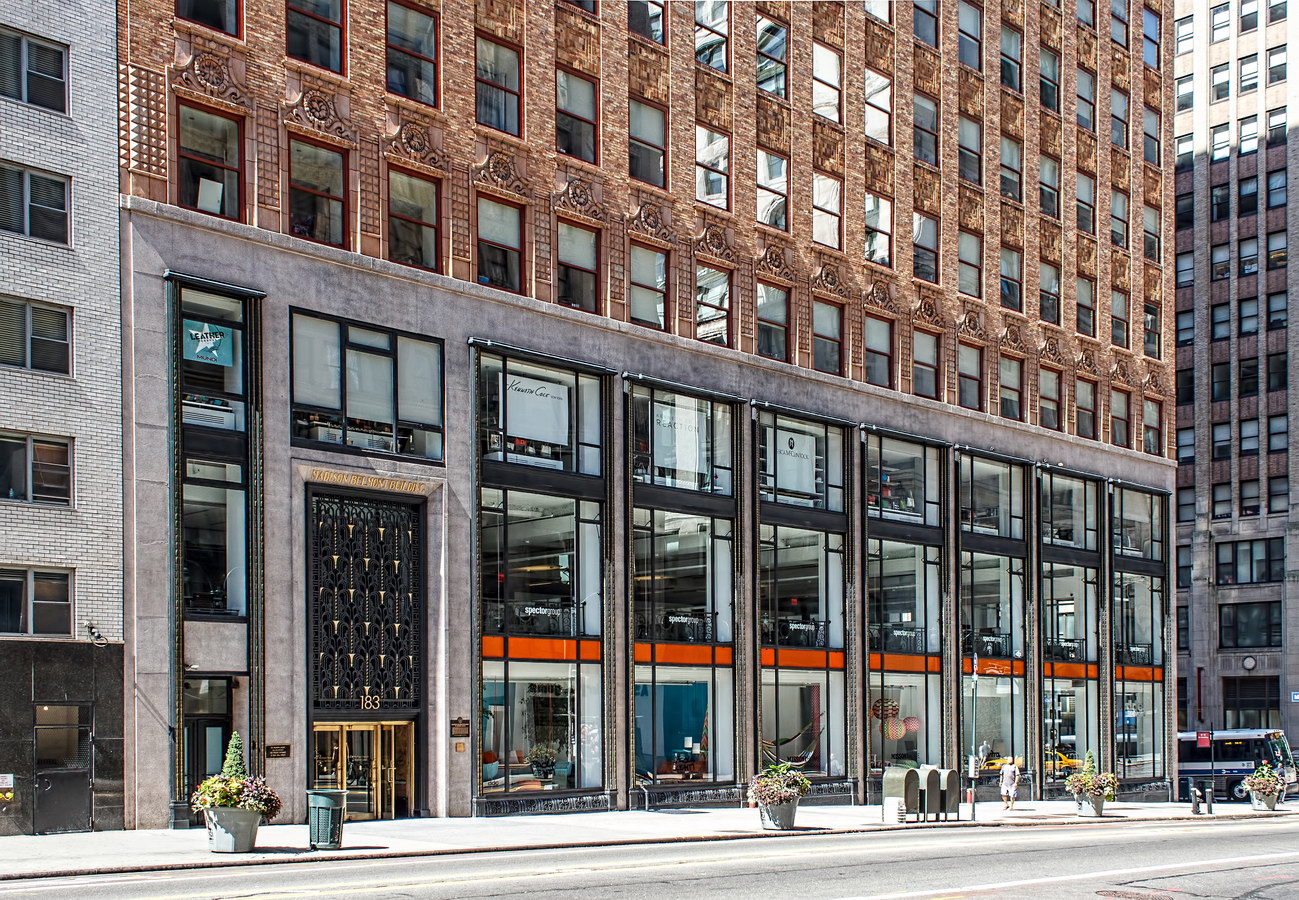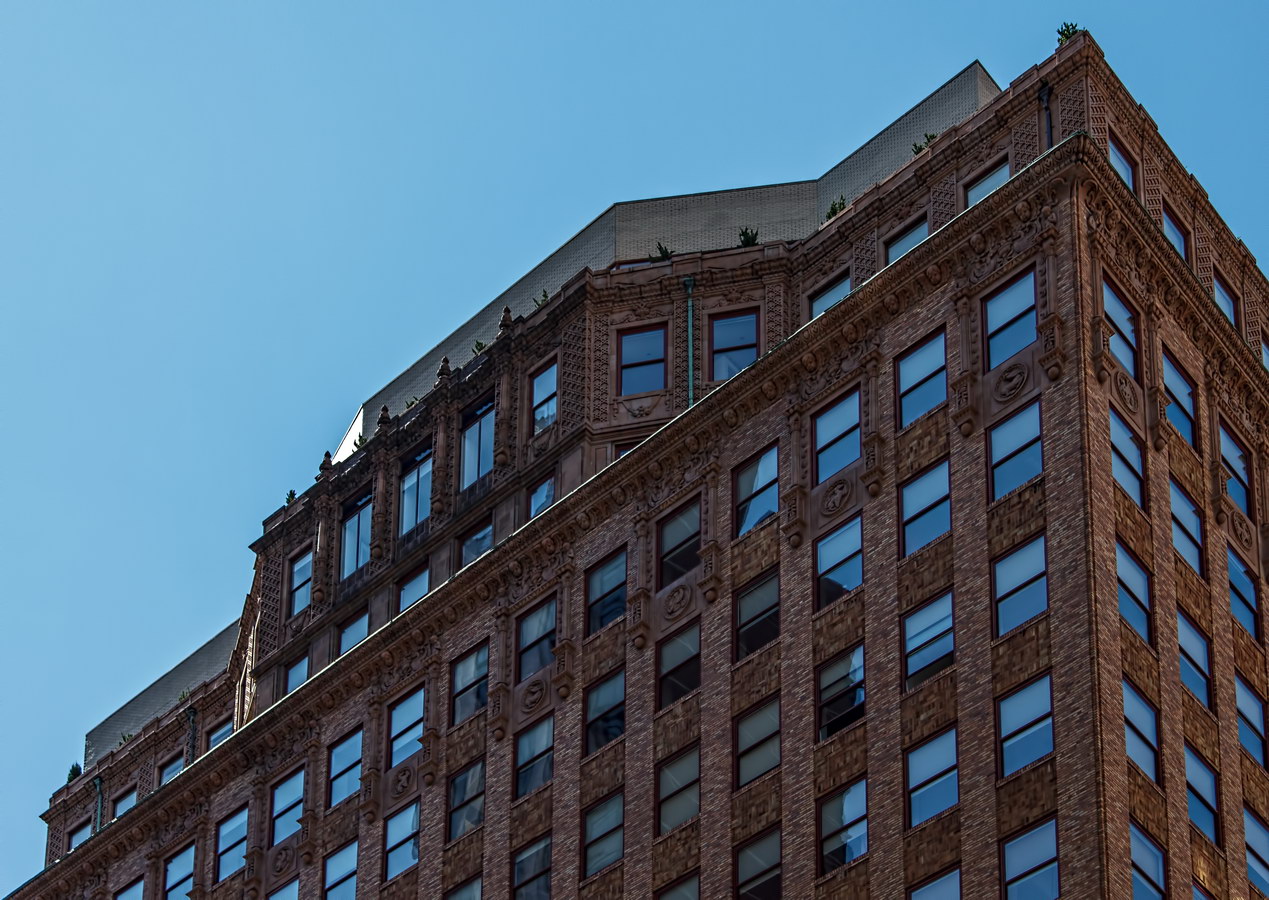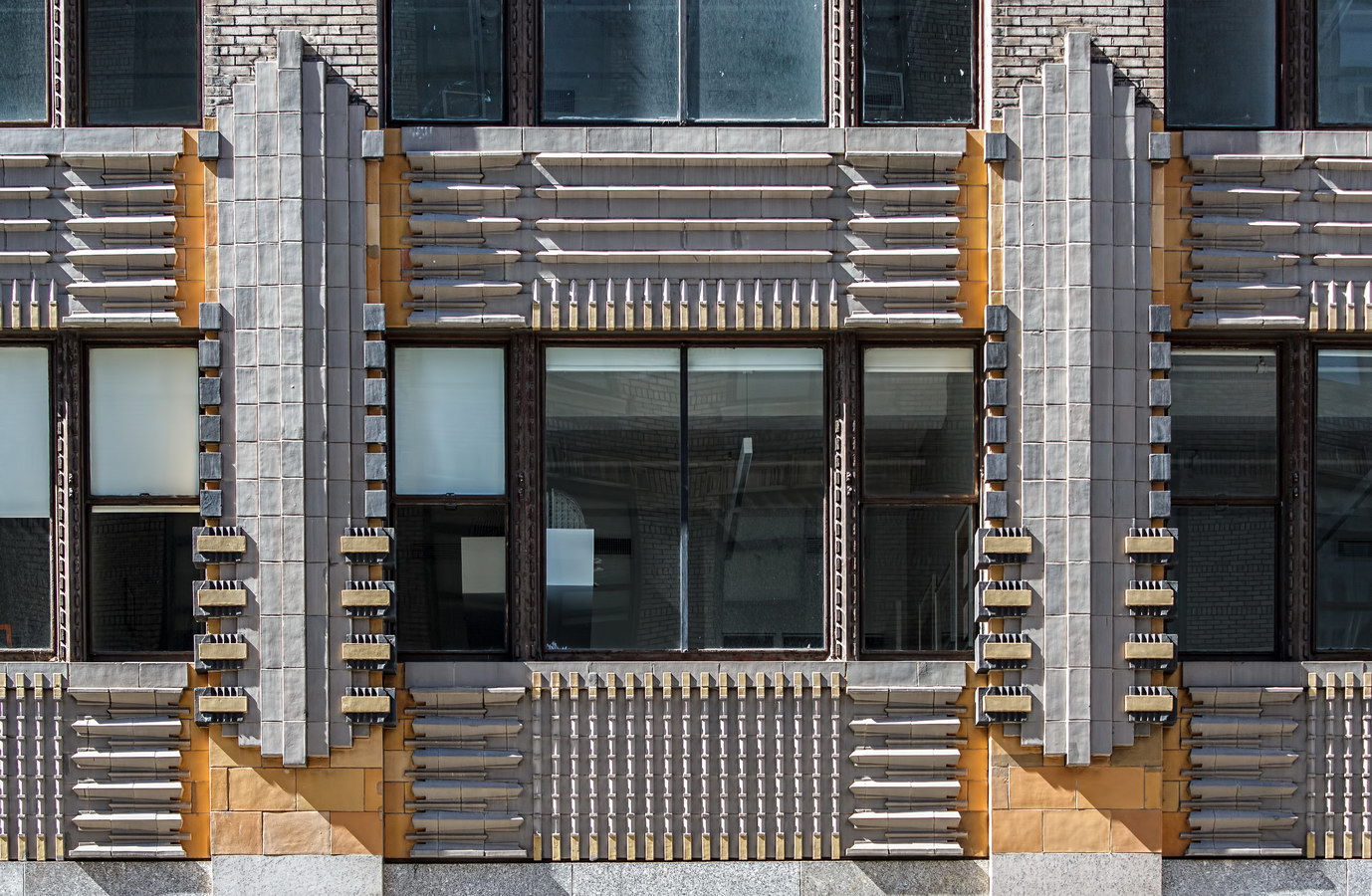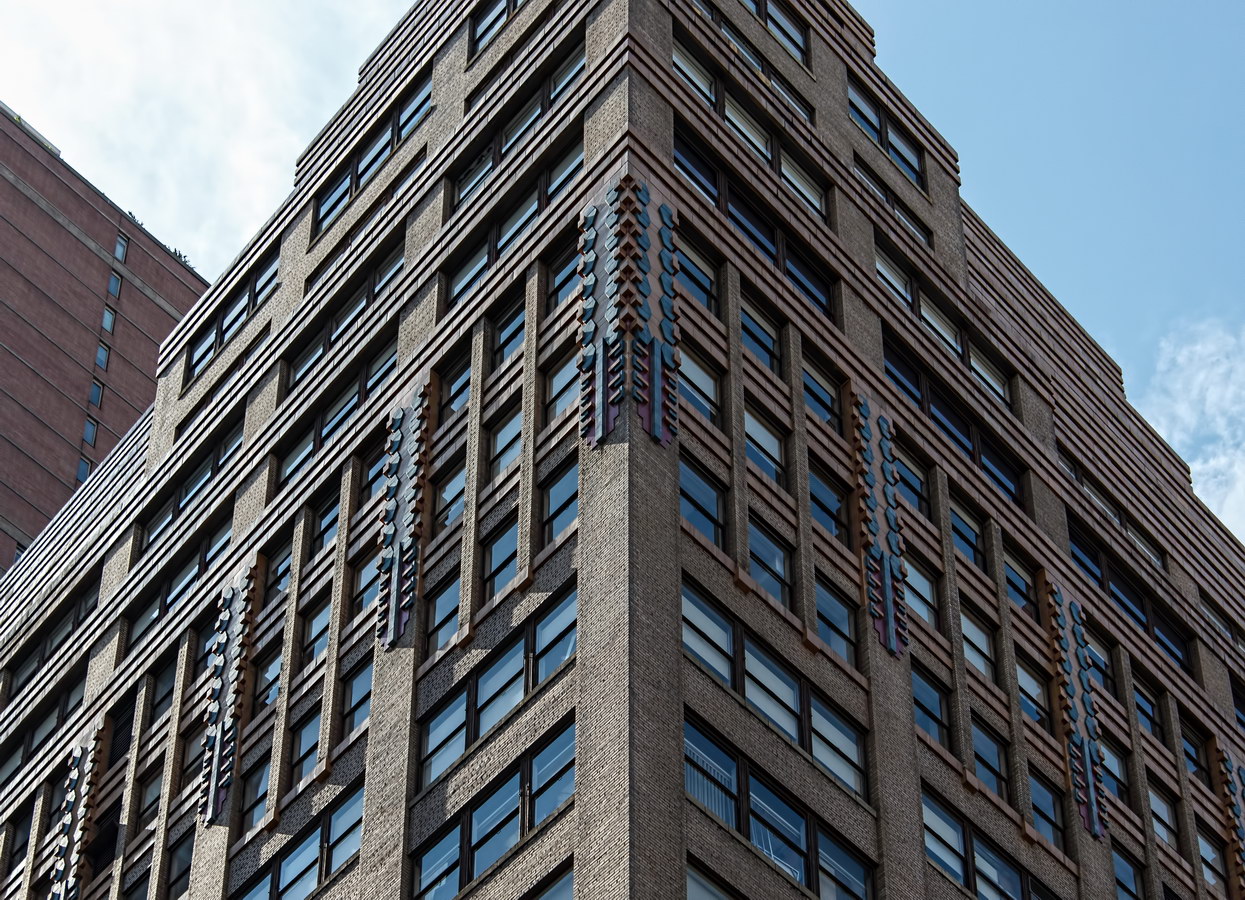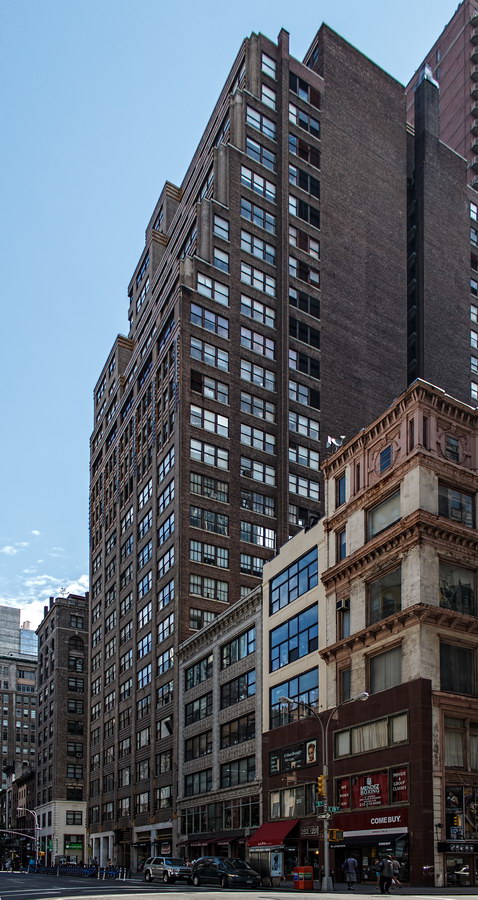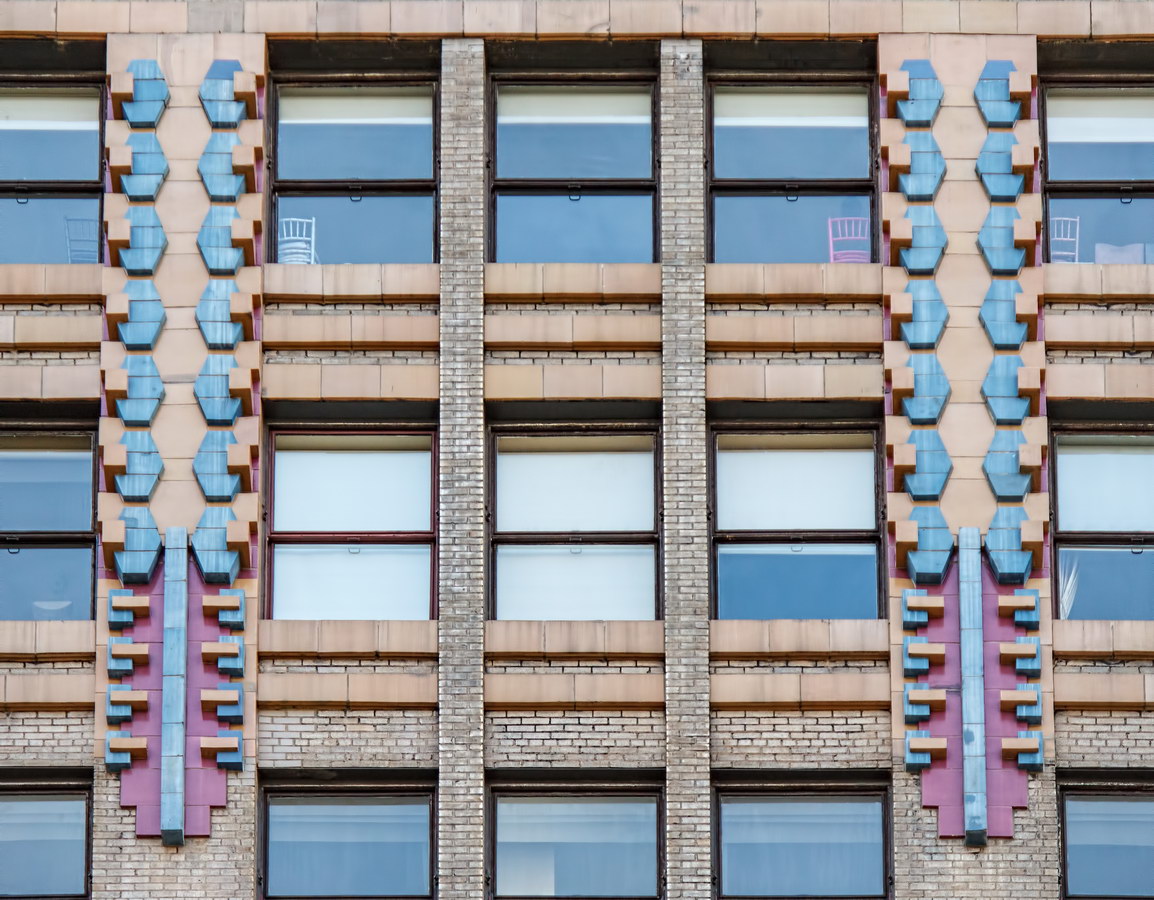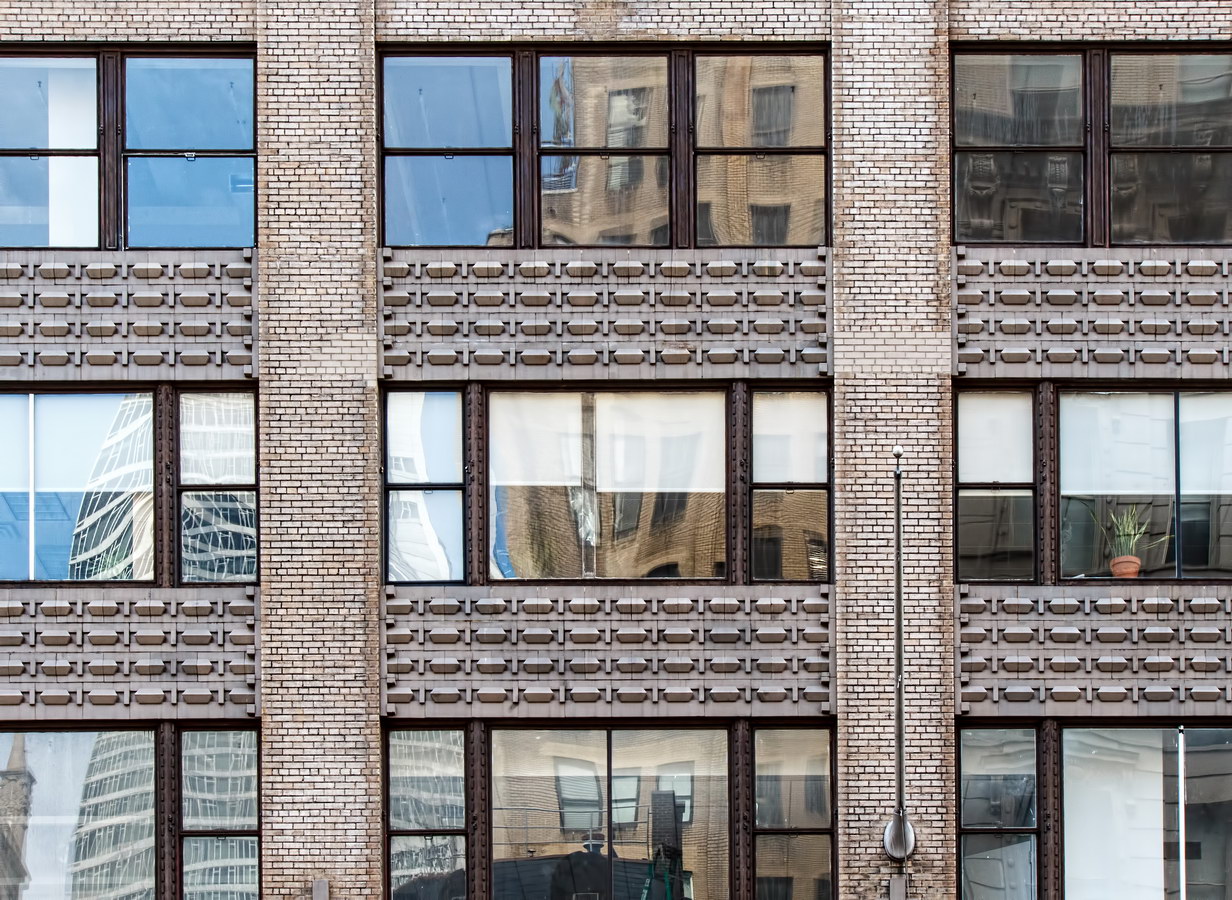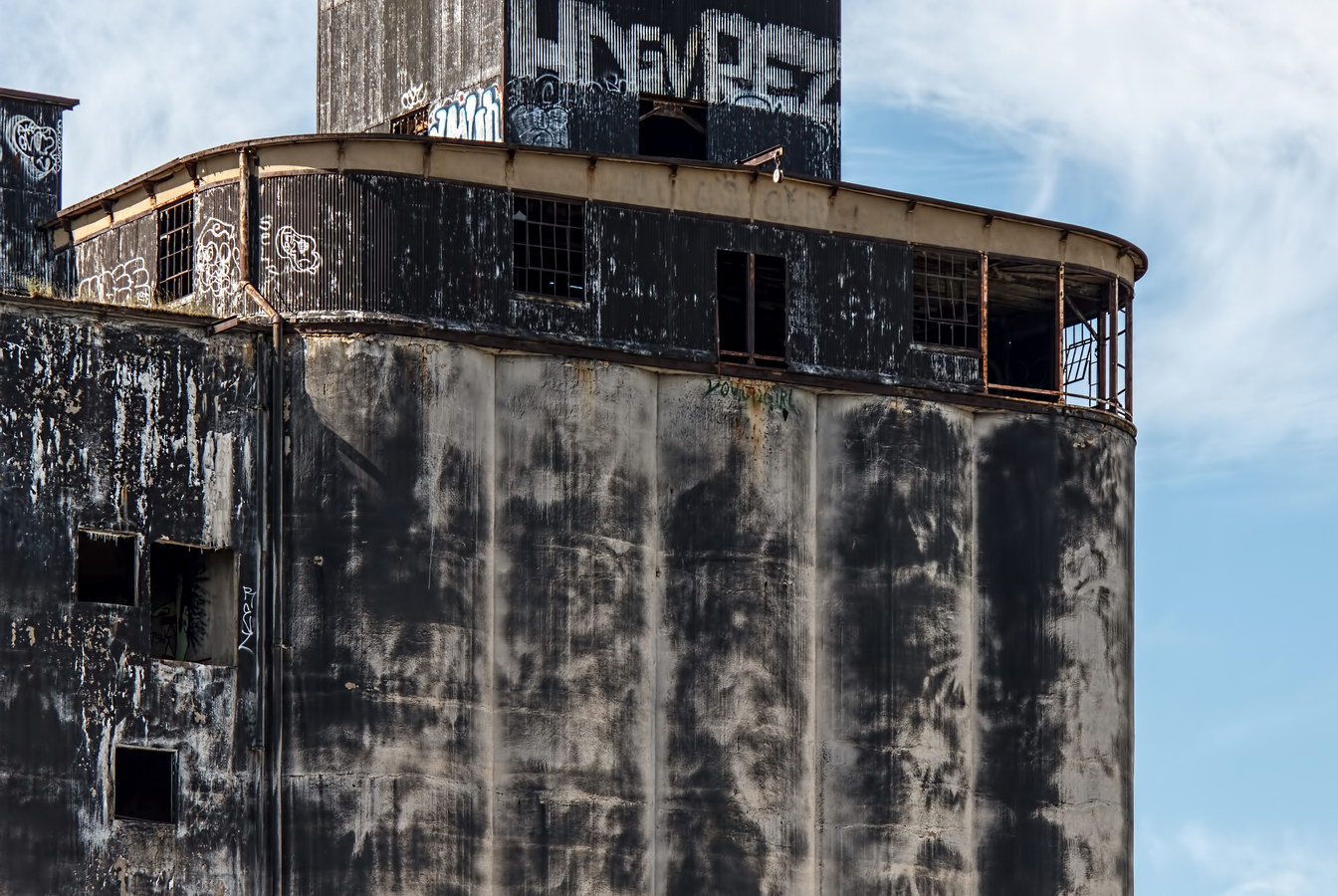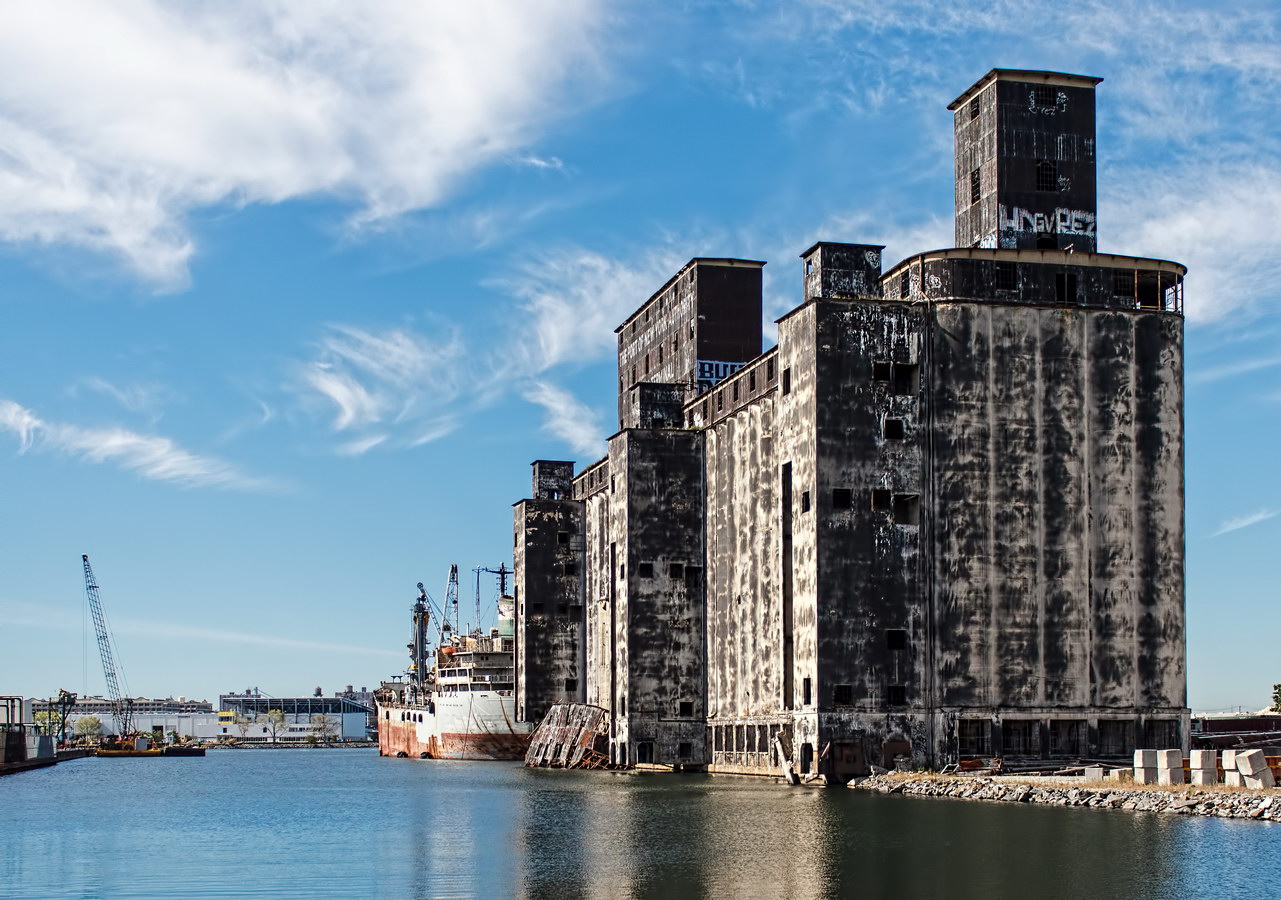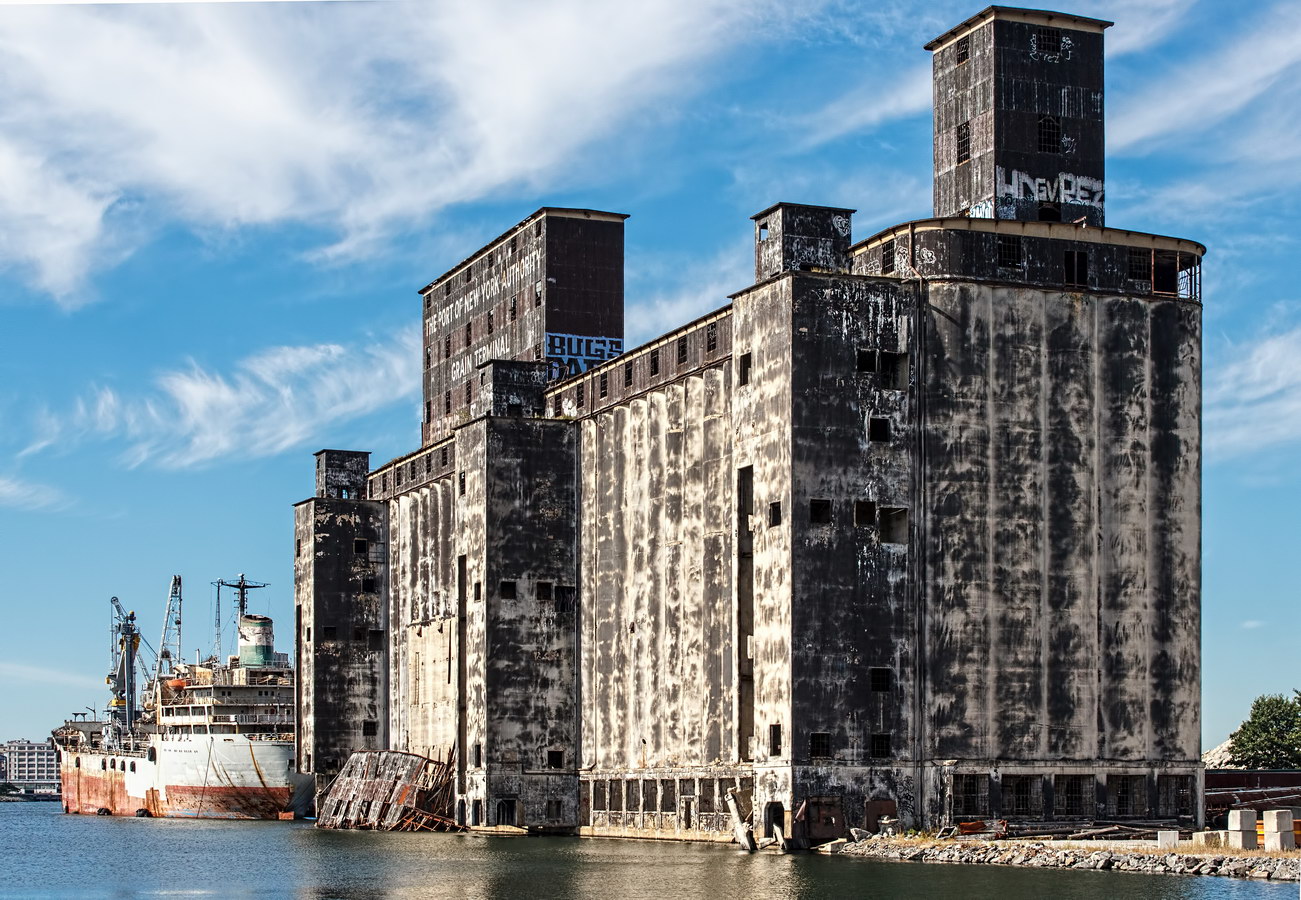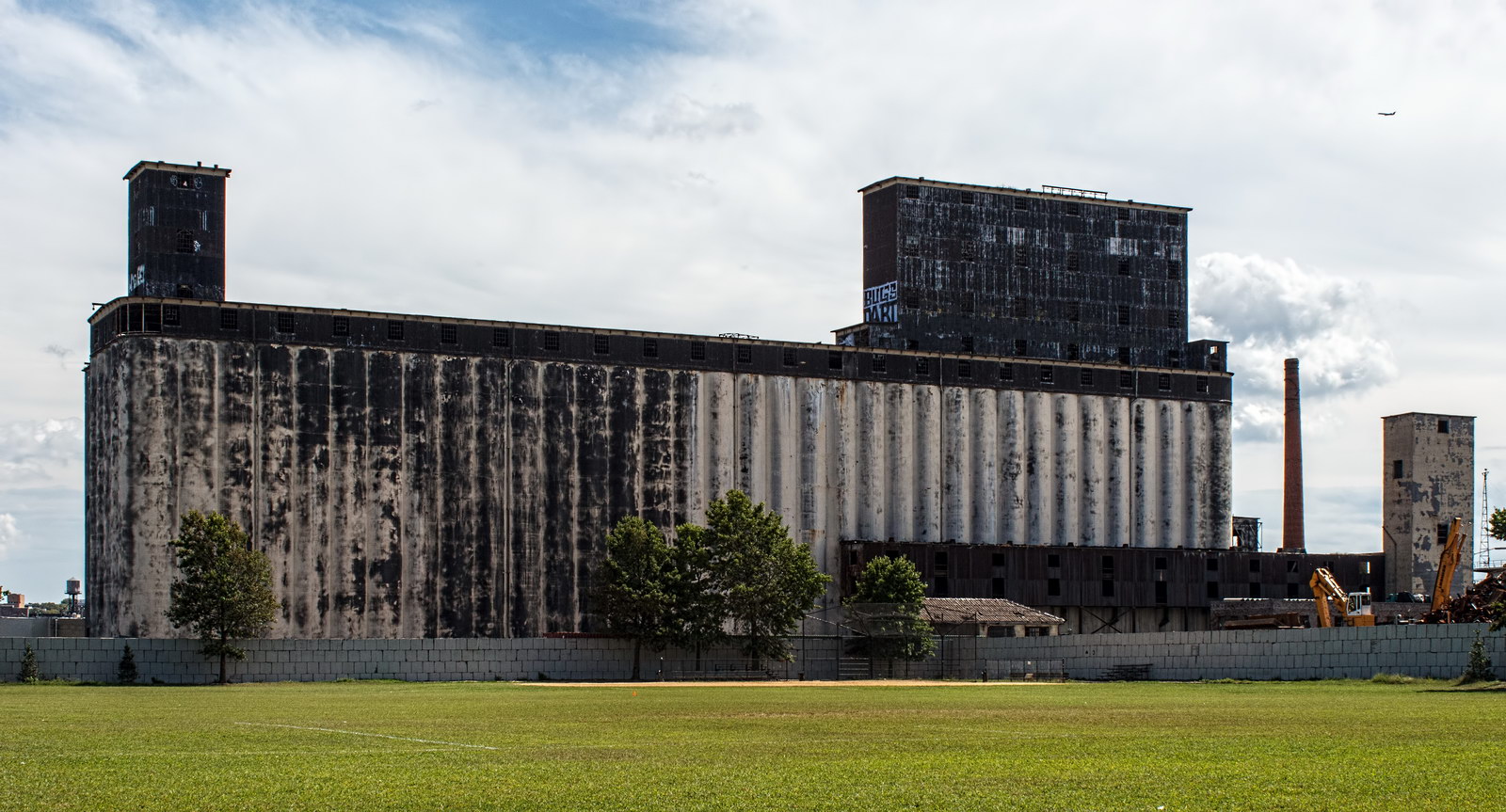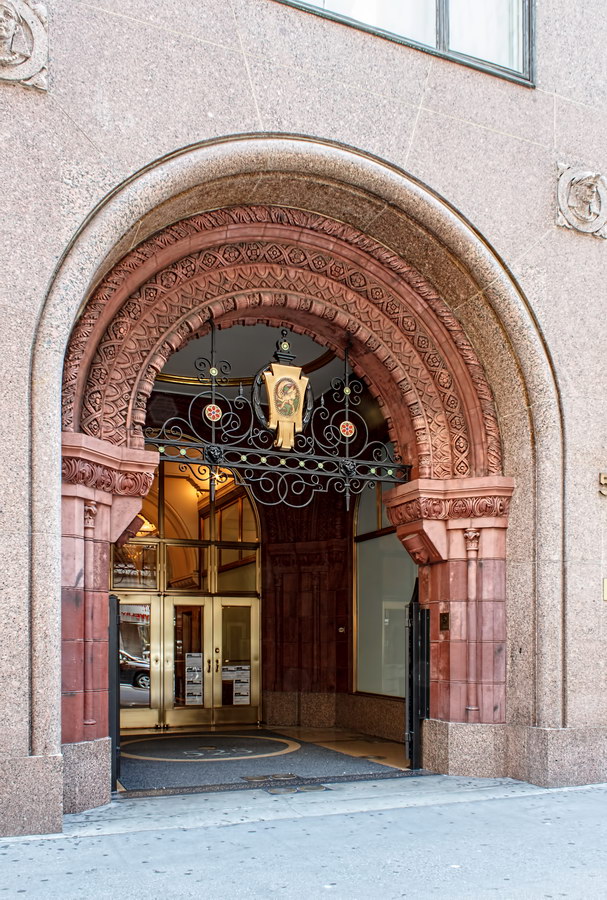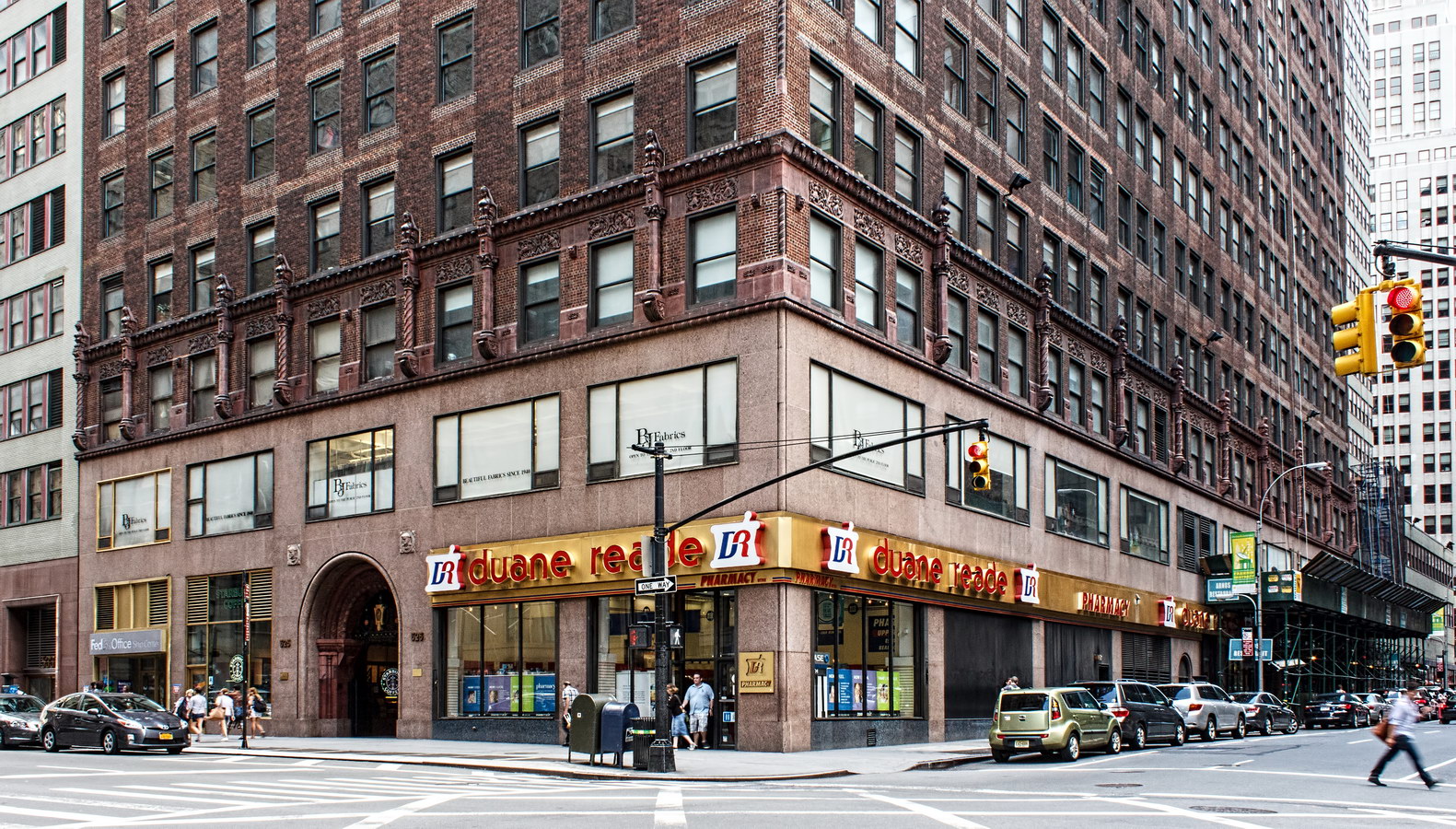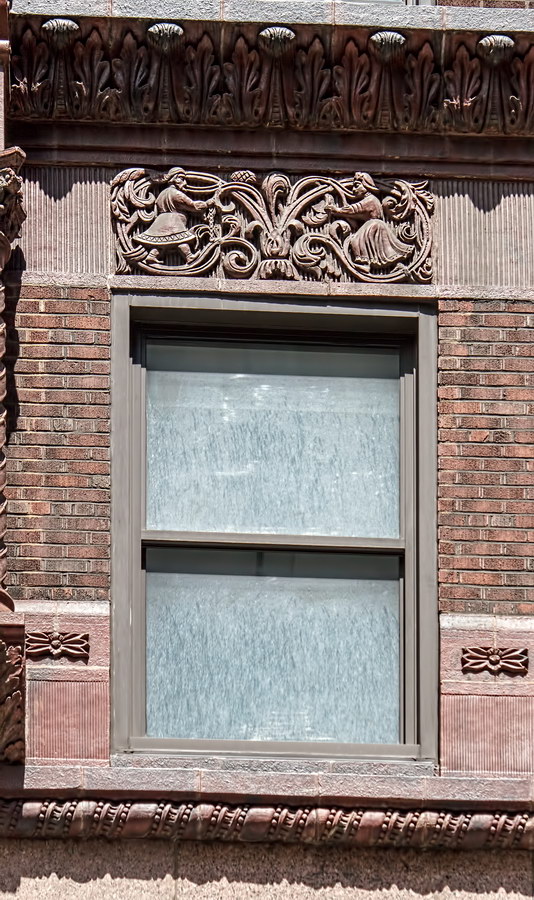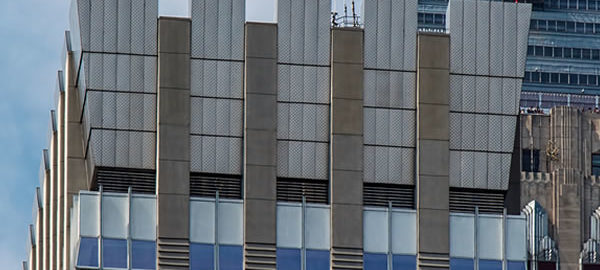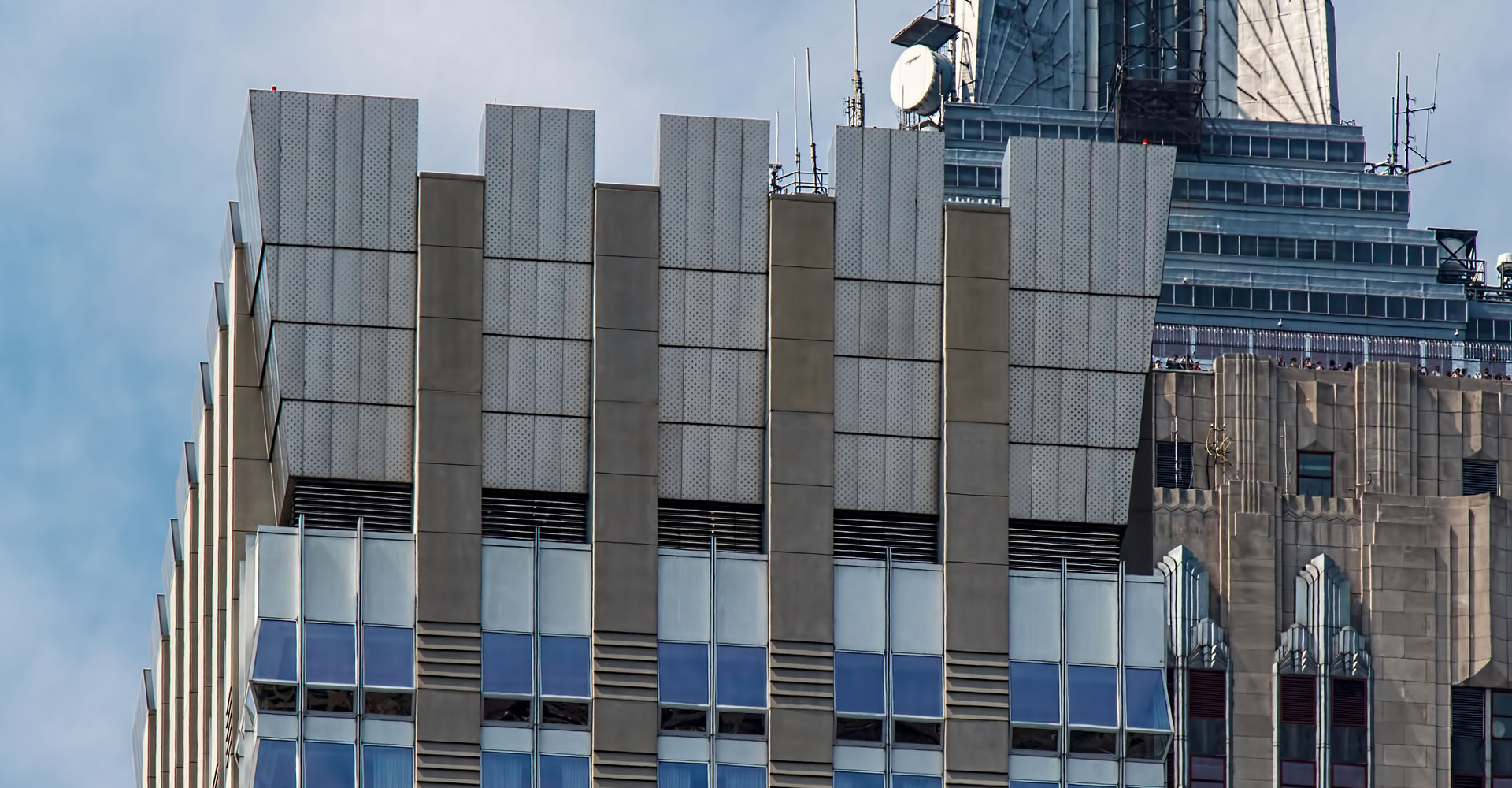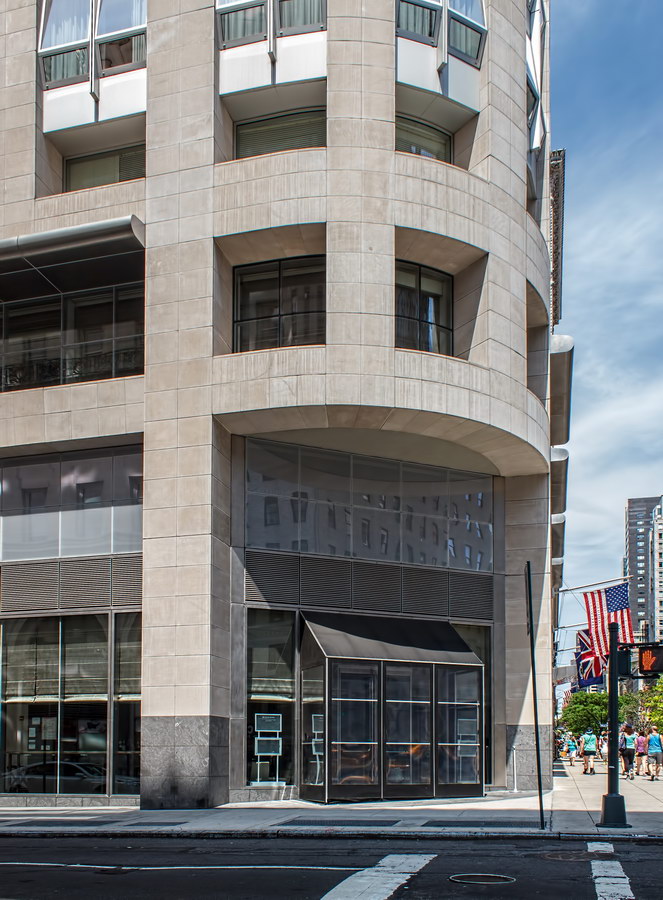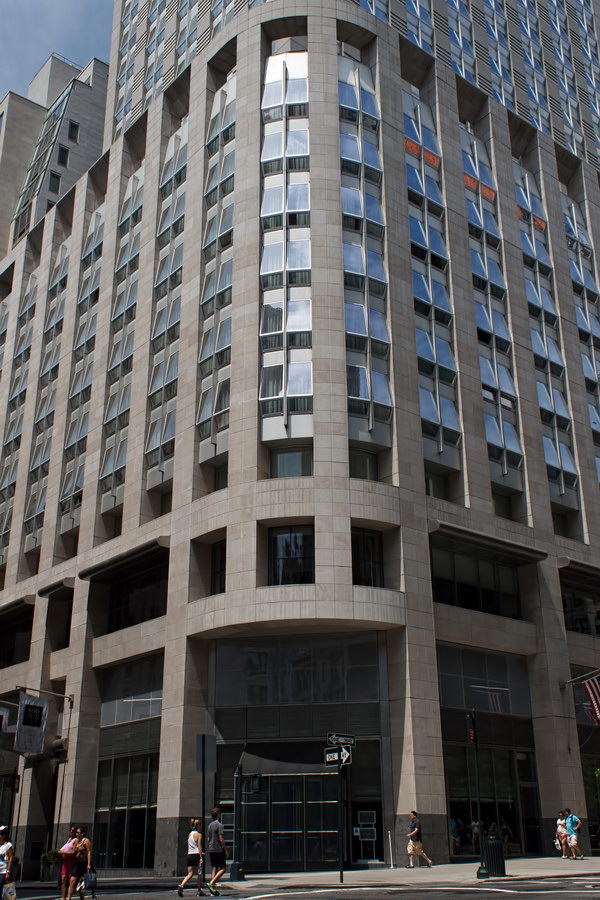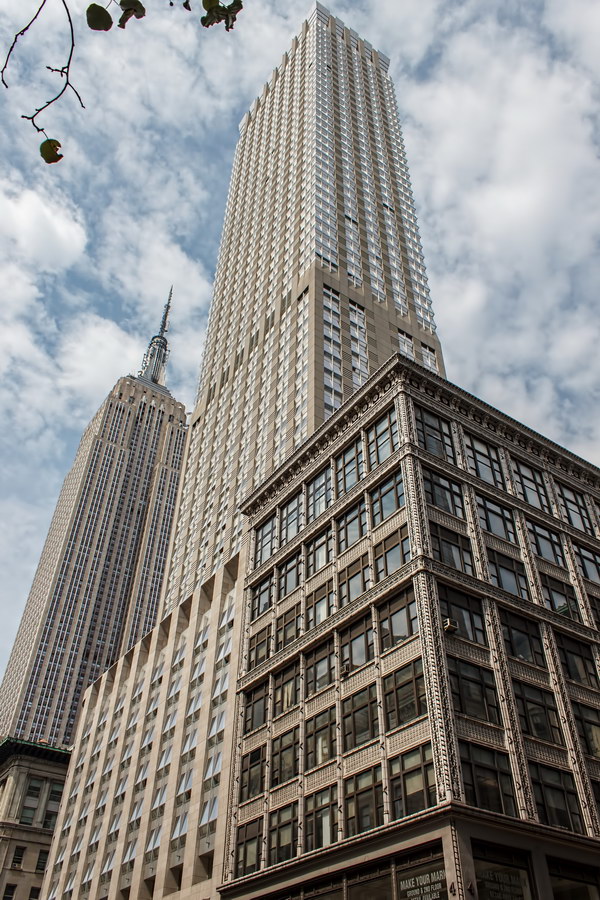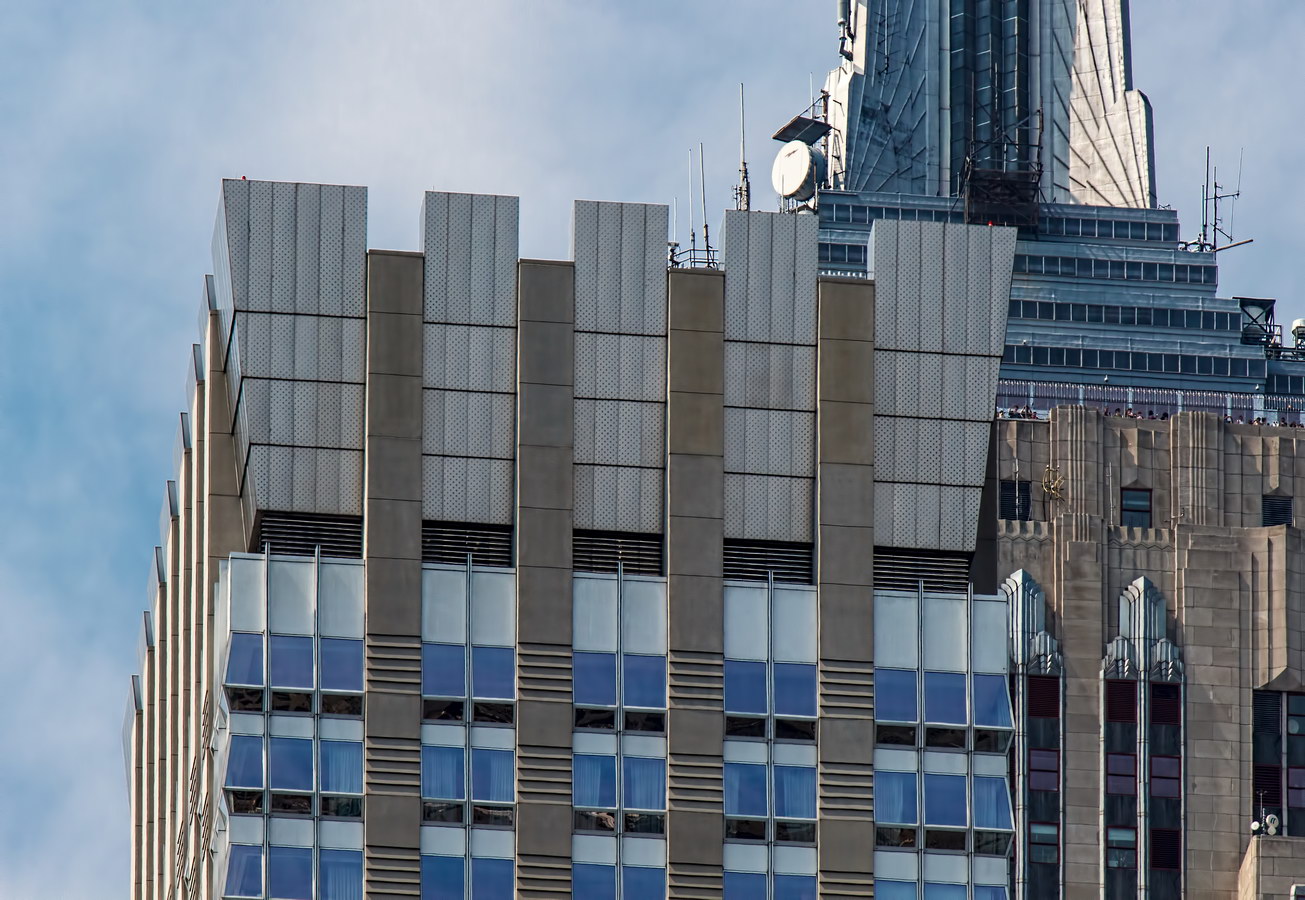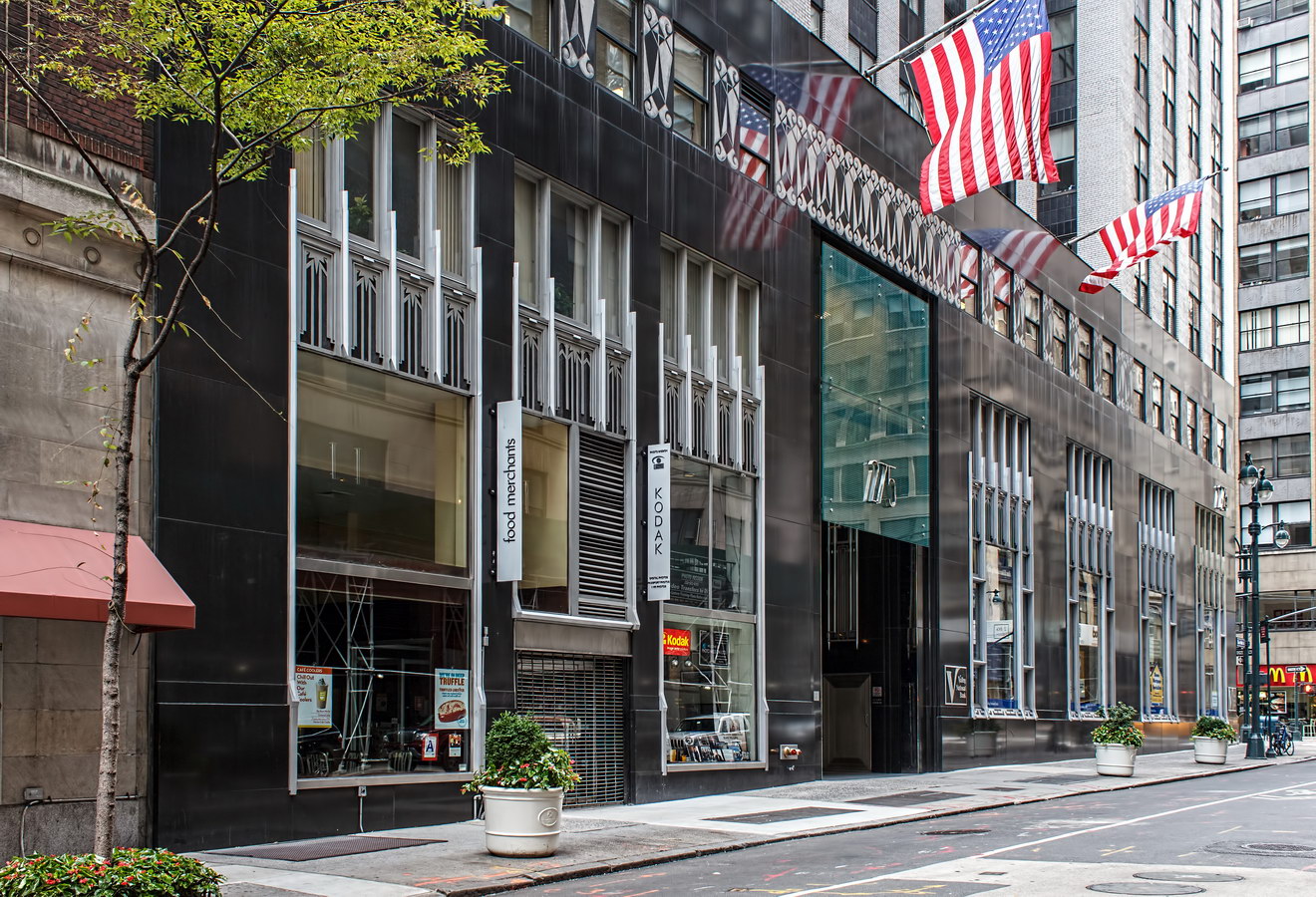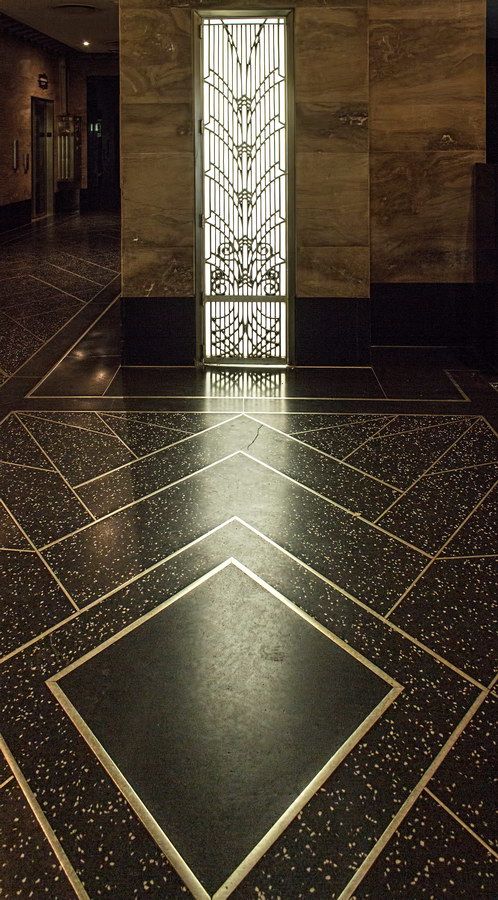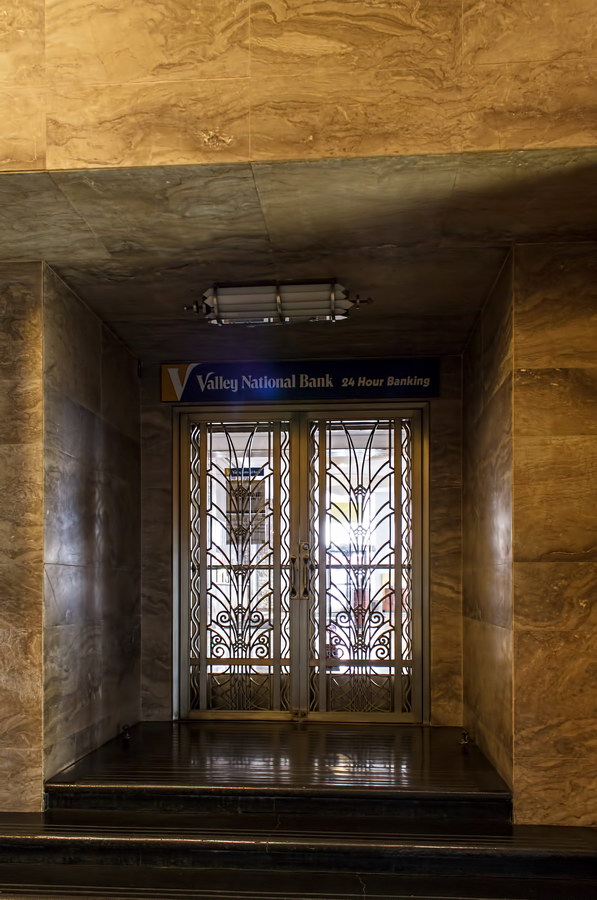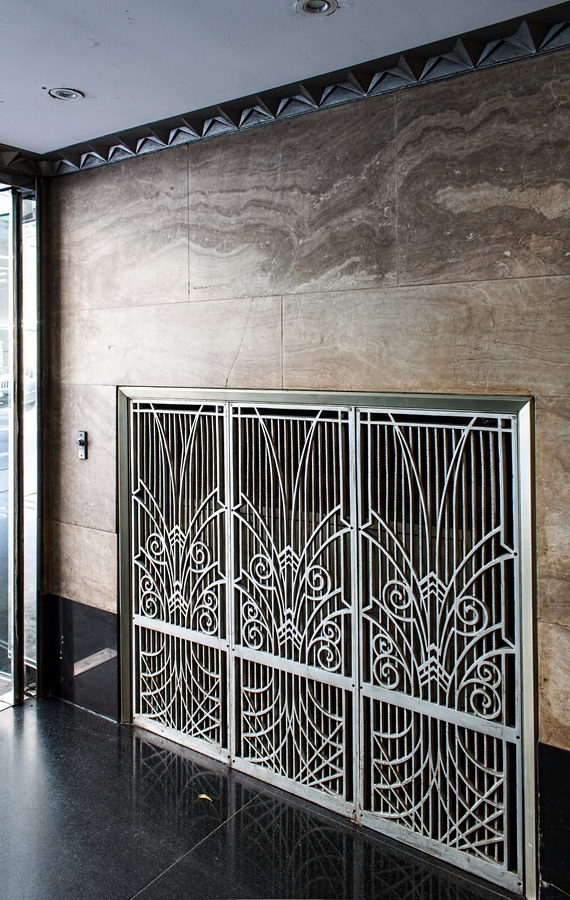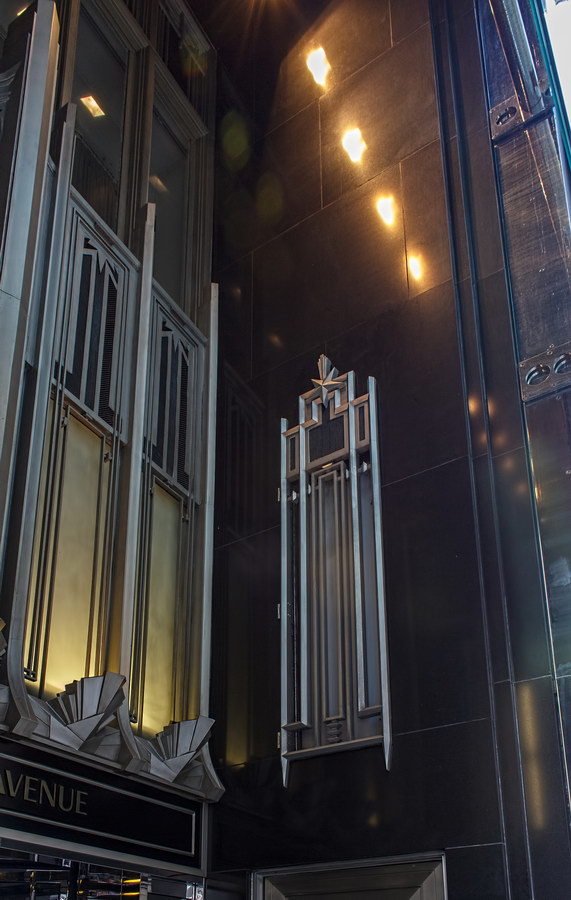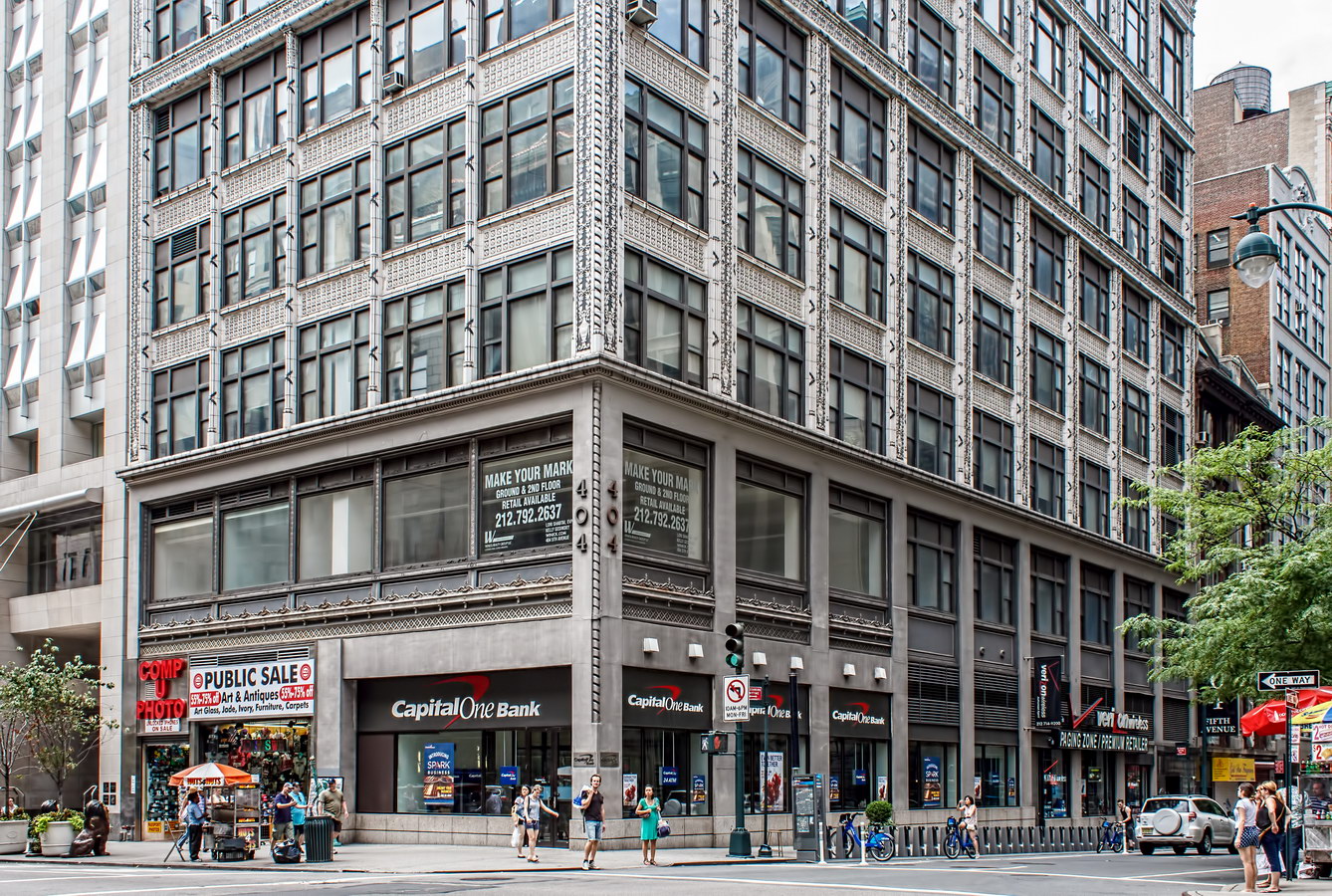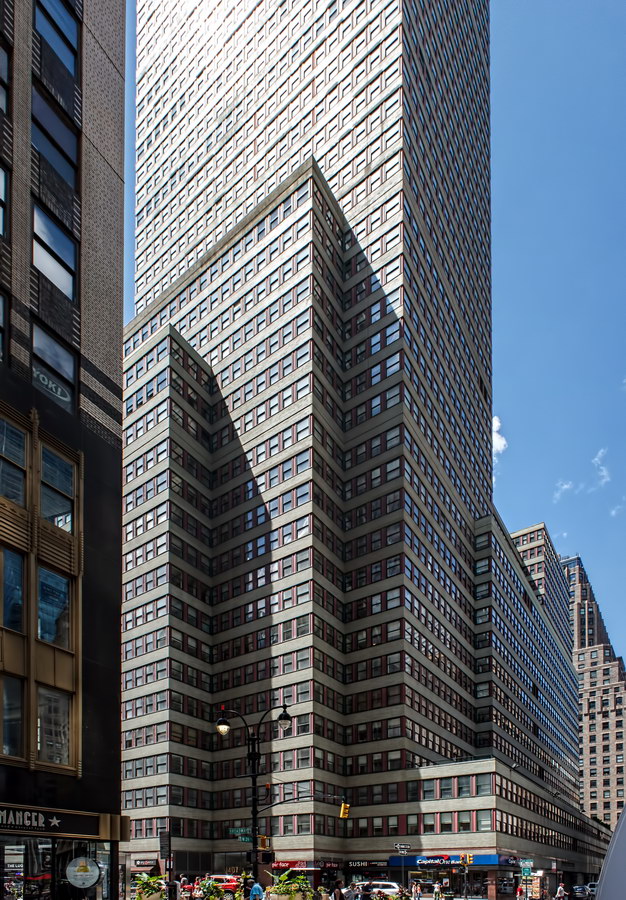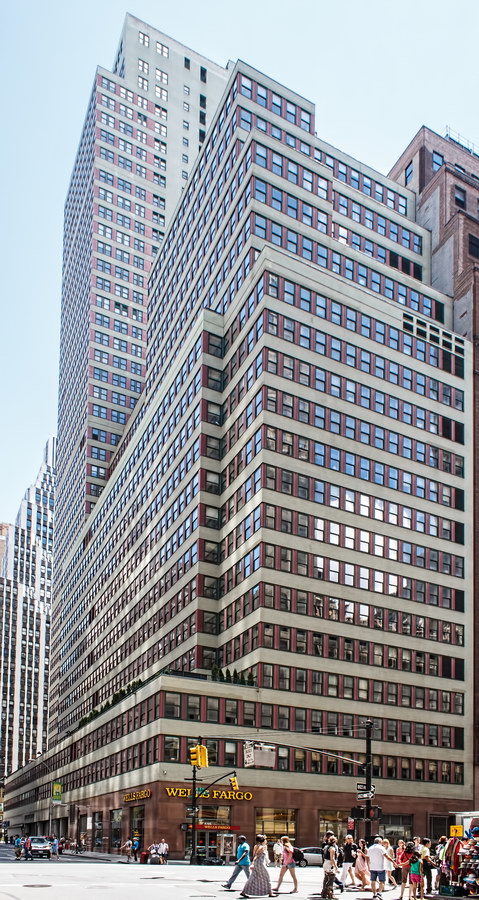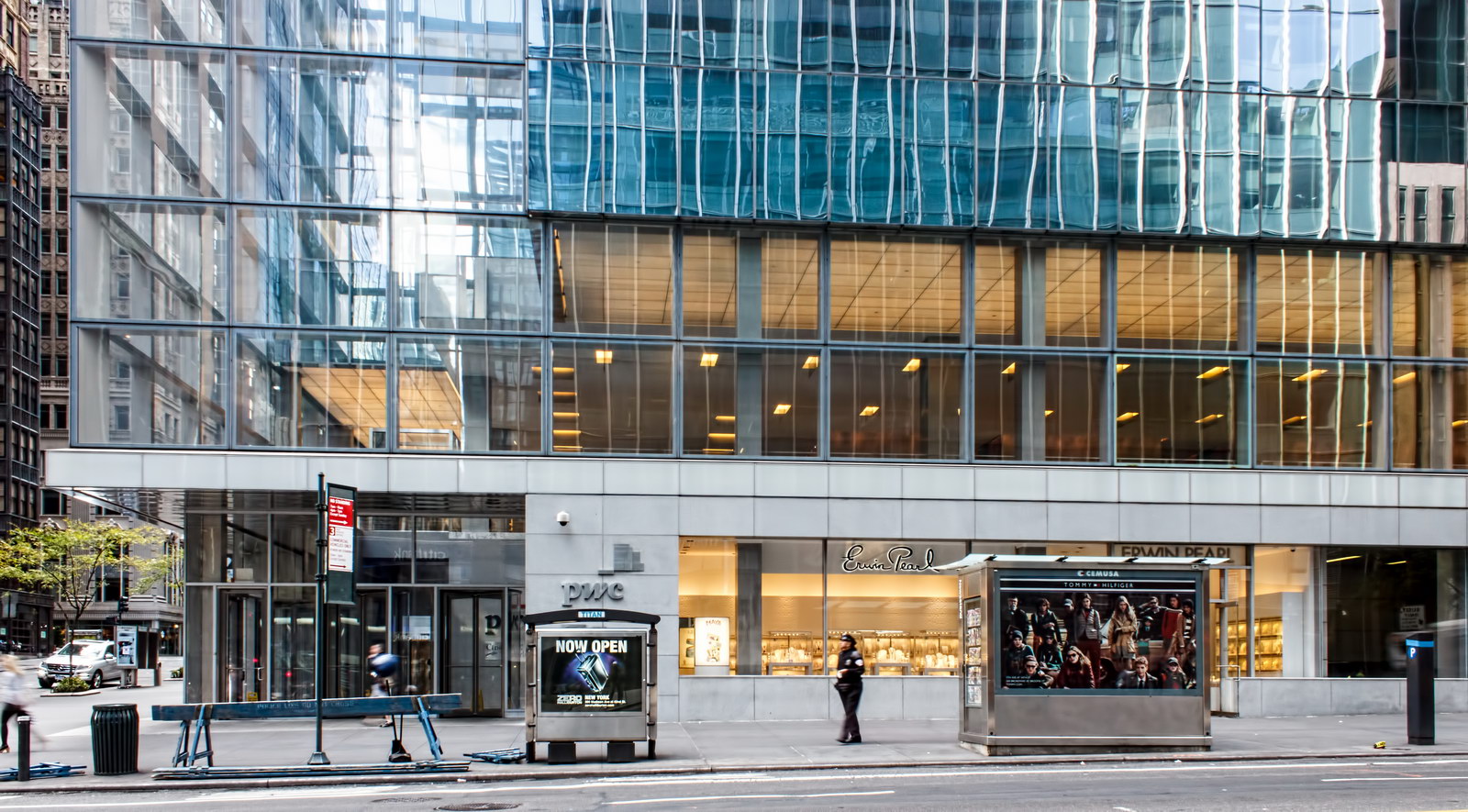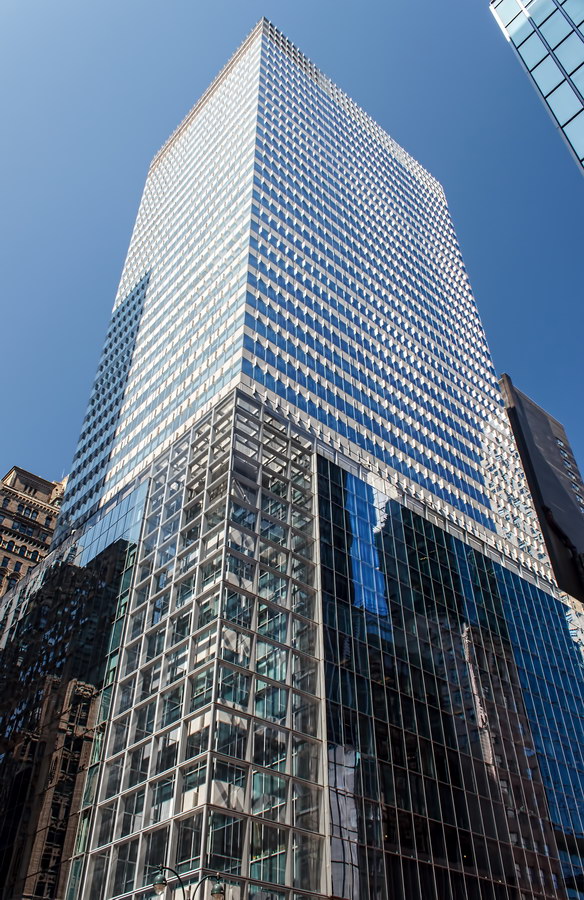The Knox Building is a landmark 10-story Beaux Arts commercial building, wrapped by the modern 29-story HSBC Tower. Both have ties to 19th-Century personalities.
Civil War hero Edward Knox took over his father’s ailing hat business and pledged to make the Knox name known wherever hats were sold. The Knox Hat Building on Fifth Avenue was part of the route taken. Knox, active in veterans’ affairs, met architect John H. Duncan and was impressed by his designs of the Grand Army Plaza Memorial Arch and the General Grant National Memorial (Grant’s Tomb). Knox subsequently commissioned Duncan to build his newest store and company headquarters.
In 1964 Republic National Bank bought the building and converted it to banking, making relatively few exterior changes (though they did remove the mezzanine). Then in 1985 Republic wrapped a 29-story L-shaped tower around the Knox Building. HSBC acquired Republic, and in 2006 made additional restorations and renovations to the structures.
The artfully done tower (Eli Attia, architect) comes off as a drape backdrop for the Beaux Arts Knox Building. The art came at the expense of the Kress Building, which many preservationists wanted to save from demolition.
HSBC Tower preserves some history that predates the Kress Building, though. In the middle of the Fifth Avenue facade a bronze door memorializes the site of an 1850s “House of Mystery.” That mansion was owned by the Wendel family until the last daughter, Ella, died in 1931 at age 78.
The five-story red brick home was said to be the last residence on that stretch of Fifth, an eccentric home to an eccentric and very wealthy family.
When Ella died, the estate reportedly took 10 years, 250 lawyers and $2 million to settle – there were no less than 2,300 individuals claiming to be heirs.
Drew University was among the beneficiaries of Ella’s will: They received, then sold, the mansion, and a Kress Department Store was built on the site.
Knox Building Vital Statistics
- Location: 452 Fifth Avenue at W 40th Street
- Year completed: 1902
- Architect: John H. Duncan
- Floors: 10
- Style: Beaux Arts
- New York City Landmark: 1980
- National Register of Historic Places: 1982
HSBC Tower Vital Statistics
- Location: 452 Fifth Avenue at W 40th Street
- Year completed: 1985
- Architect: Eli Attia
- Floors: 29
- Style: Postmodern
Knox Building / HSBC Tower Recommended Reading
- NYC Landmarks Preservation Commission designation report
- The New York Times: A NEW STYLE MAKING ITS MARK (Mar. 7, 1982)
- The New York Times: ABOUT REAL ESTATE; COMPLEX PROJECT ENDING AT BANK’S FIFTH AVE. SITE (Nov. 6, 1985)
- New York Post: New neighbors for library lions (Aug. 9, 2011)
- New York Post: 452 Fifth Ave. looking up (Sep. 17, 2012)
- Daytonian in Manhattan blog
- 452 Fifth Avenue website
- Eli Attia (HSBC Tower architect) website
- The New York Times: An Orphan Asylum and a Fifth Avenue ‘Farmhouse’ (Aug. 31, 1997)
- Drew Magazine: The Fabulous Wendels
- ICINEFIED forum
